Peru often becomes a favorite destination for many visitors. With its fascinating history, diverse culture, delicious food, and a multitude of things to do, it’s easy to see why. Peru famously offers one of the New7Wonders of the World at Machu Picchu. But you can also enjoy beautiful historic cities from the Spanish colonial period, taste unique and delicious cuisine, and find some of the world’s top luxury experiences.
Sometimes overlooked, Peru is also home to the second largest area of the Amazon Rainforest. And this guide will mention a few remarkable areas to enjoy this vast region. Because of Peru’s diversity, this is a summary guide of the 25 Best Places to Visit in Peru to help you make the most of the country. So let’s get started.

Table of contents: ()
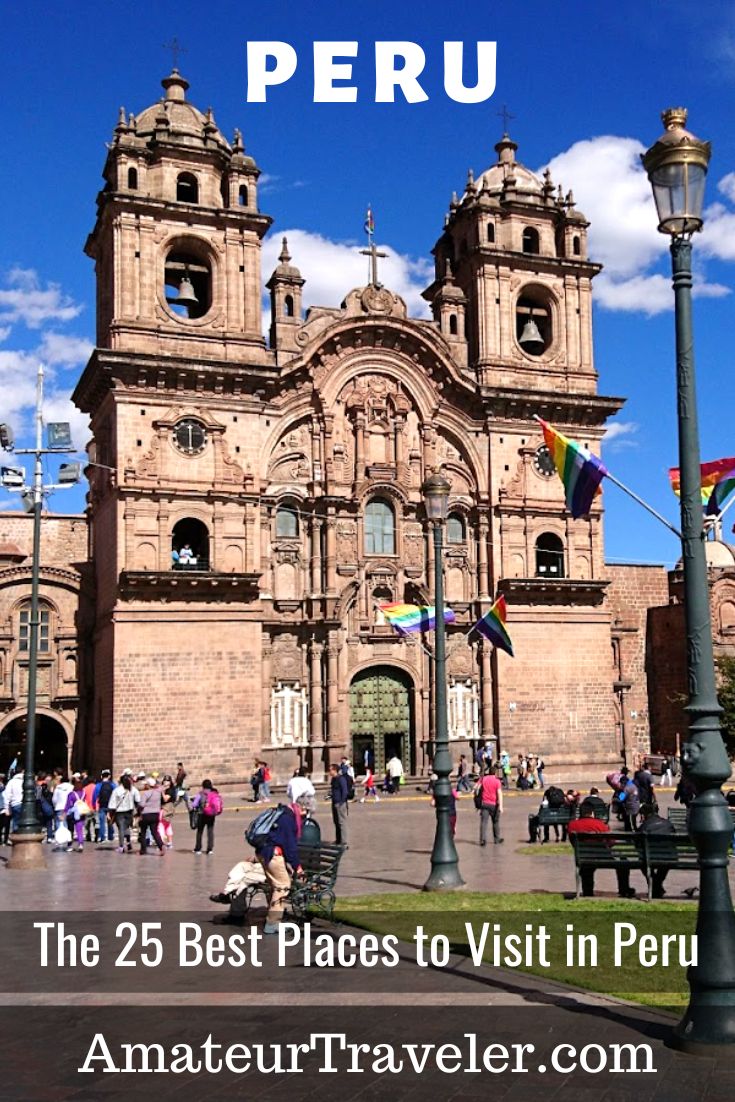
- The Tambopata National Reserve
- Machu Picchu
- Cusco
- The Pacaya Samiria National Reserve
- Peru’s Cloud Forest
- Colca Canyon
- Kuelap
- The Tamshiyacu Tahuayo Reserve
- Chan Chan
- The Ollantaytambo Ruins
- The Manu Rainforest
- Moray
- Iquitos
- Sipan
- Arequipa
- The Paracas National Reserve
- The Ballestas Islands
- The Huacachina Sand Dunes
- The Huascarán National Park
- Rainbow Mountain
- Lima
- Sacsayhuaman
- Trujillo
- Mancora
- Lake Titicaca
- Ica
The Tambopata National Reserve
A beautiful protected area in southern Peru, the Tambopata National Reserve offers some amazing wildlife opportunities. Covering a little over 3.6 million acres of species-rich rainforest, the reserve connects with surrounding conservation areas. Tambopata is part of one of the world’s largest sections of protected tropical forest.
A phenomenon of this region is that there are more clay licks here than anywhere else on Earth. The licks are visited by macaws and other animals to obtain salts and medicines. This means that you can see hundreds of colorful macaws in one area, and this increases your chance of spotting iconic predators, including ocelots and jaguars. Not only a great place to find parrots, the clay licks are also visited by rainforest mammals, such as tapir, peccary, and even monkeys.
Rainforest lodges have been built in a responsible manner near the clay licks, which means you have almost guaranteed wildlife viewing. The Tambopata lodges in deep rainforest also report higher chances of jaguar sightings than anywhere else in Amazonia.
In addition to the clay licks, this area of the rainforest has many different oxbow lakes. Formed when the river changed direction, the lakes attract a variety of fantastic animals. Some of the favorites to see are the giant otters, hoatzin birds, and colorful herons, but also the many monkeys that visit the lake edges to feed.
If you would like to explore Tambopata, there are fantastic Amazon tours in Peru to make the most of Tambopata Reserve and other areas of the Peruvian Amazon.
Machu Picchu
The most famous sight in Peru, Machu Picchu draws over a million visitors each year to marvel at this incredible and beautiful Incan structure. Perched high on the Andes, the UNESCO World Heritage-listed landmark was a 15th-century Incan site. It is thought to have been built for emperor Pachacuti who lived between 1438 and 1472. This was at the pinnacle of the Inca Empire, and Machu Picchu stands prominently atop the mountain as if to highlight Inca dominance.
While looking at the structure, it’s hard to believe that the Spanish had no idea of its existence. The Inca kept Machu Picchu a well-kept secret from the world until the expedition of the American explorer Hiram Bingham in 1911. This means that for nearly 500 years the only people who knew of Machu Picchu were the people living nearby.
Now one of the world’s most visited sights, you can visit Machu Picchu from Cusco by enjoying the Vistadome or luxury-class Hiram Bingham train from Poroy Station. And the best way to visit Machu Picchu is on a combination tour with some of the astounding sights around Cusco.
Cusco
The birthplace of the Incan Empire, Cusco is now one of the major tourist cities in Peru, as it’s the base to enjoy the Sacred Valley and Machu Picchu. Although the entry point to Peru’s popular attractions, the city itself is definitely worth exploring for a couple of days or more, as there are some fantastic things to do in and around Cusco.
The entire city has been listed by UNESCO as a World Heritage Site. The reason for this is that Cusco was built on the historic Incan capital. This means you can find the Spanish colonial buildings built on Incan foundations. Even the main city plaza is in the place of a historic Incan square, which is guarded by the Cusco Cathedral constructed on the ruins of an Incan palace.
Enjoy some of the world’s most historically fascinating city walks as you navigate the narrow cobblestone streets lined with giant Incan stones. Above this, you will see the wooden balconies and Spanish brickwork with the merging of two contrasting cultures.
Peruvian cuisine offers another journey into the merging of distinct cultures. You can find some fantastic restaurants in Cusco to try local cuisine. Some recommendations include Museo de Pisco, where you can also try variations of Pisco sour, the national drink, and Faustina for delicious Peruvian cuisine. You can also head to Kusikuy if your curiosity gets the better of you and you would like to try guinea pig, which is a traditional Andean food.
From Cusco, you can enjoy guided tours to explore the Sacred Valley and Machu Picchu. We will mention some of the favorite sights from Cusco on this page, such as Machu Picchu above, but also the Incan and pre-Incan structures of Ollantaytambo, Moray, and Sacsayhuaman.
The Pacaya Samiria National Reserve
The Pacaya Samiria National Reserve is one of Peru’s largest protected areas. A mostly flooded reserve of the Amazon Rainforest, the Pacaya Samiria is known as the ‘mirrored forest’ due to the water’s beautiful reflections.
Because of its incredible size and protection, you can find many animals and plants within the Pacaya Samiria Reserve. Spot colorful birds, several different types of monkeys, delicate orchids, bromeliads, and tall emergent trees. Surrounded by lush vegetation, incredible wildlife, and reflective waters. We rank the Pacaya Samiria as one of the best places to visit in Peru.
On fantastic Pacaya Samiria cruises, you won’t simply be confined to the vessel but will instead head out on small group tours. Enjoy guided expeditions along the waterways to find howler monkeys, capuchins, toucans, colorful macaws, pink river dolphins, and more.
Because this is a large protected area extending over 5 million acres, the best way to enjoy the Pacaya Samiria is on a river cruise. To visit the Pacaya Samiria National Reserve, you will first fly to Iquitos in northern Peru. After arrival in Iquitos, you will be collected by your booked tour and will be transported to Nauta, which is your gateway to this incredible region.
Peru’s Cloud Forest
A cloud forest is defined as a forest at such a high altitude that it’s penetrated by cloud cover. The high altitude, temperature differences, and sloping nature of the terrain have created one of the world’s most species-rich biomes.
Although threatened, the environment contains a record-breaking diversity of animals and plants. For example, this is where you will find the world’s highest diversity of hummingbirds. You will find many orchids, bromeliads, and different monkeys.
You can visit the cloud forest of Peru from Cusco by enjoying a stay at different cloud forest lodges.
This region is also where you can find Peru’s national bird, the bright red cock-of-the-rock. In fact, on guided tours, you can visit the dancing ground where the birds display to potential mates with a colorful and showy dance.
Enjoy guided tours to explore the cloud forest to find many different birds, including the national bird already mentioned, but also different hummingbirds, toucans, and tanagers. In addition to birds, you can find capuchins, wooly monkeys, bromeliads, and delicate orchids.
There are walking trails from the lodges where you can see different cloud forest habitats, including bamboo areas and mountain streams.
Colca Canyon
Another of Peru’s favorite places, covering 50 miles and descending 6,000 feet, Colca Canyon is the world’s second deepest canyon.
The region provides beautiful scenery, and you can often see the famous Andean condors gliding above.
In addition to the beautiful scenery and astounding features of the canyon itself, you can find Incan remnants dotting the region. You will also see the small viscachas (a chinchilla relative) darting between the rocks.
There are fantastic walks to enjoy in Colca Canyon and also some great lodges, which offer spectacular views. Another of the favorite things is that many locals still wear traditional Andean dress, which means the region offers some interesting cultural experiences.
Kuelap
Built by the mysterious Chachapoyas of northern Peru, Kuelap’s size and design make it one of the only structures in Peru that can rival Machu Picchu in significance. As with Machu Picchu, this is another remarkable structure that remained completely unknown to the Spanish.
The Chachapoyas are known as the ‘cloud people’ because they lived in the mountains in an area of cloud forest. The ruins of Kuelap themselves consist of a high-walled fortress built around the 6th Century AD. Although being built at this time, Kuelap was inhabited until the Spanish conquest of South America.
The wall surrounding Kuelap reaches 65 feet high and was built with large pink granite stone. Although lesser known than Machu Picchu, the size of Kuelap combined with the scenery of the impressive cloud forest make it one of Peru’s must-visit attractions. Surrounding the structure, you will enjoy delicate orchids, bromeliads, and lush vegetation.
The Tamshiyacu Tahuayo Reserve
Nestled in an area of Peruvian rainforest beside the Pacaya Samiria National Reserve mentioned further up, the Tamshiyacu Tahuayo Reserve is better explored from a rainforest lodge. This is because the Tamshiyacu area contains more accessible higher ground forest where you can explore the Amazon on foot.
Home to an impressive diversity of animals, the Tahuayo Reserve is a great place to find several different monkeys. Enjoy spotting howler monkeys, capuchins, squirrel monkeys, titi monkeys, and saki monkeys. Although rarely seen, a much-loved species in the protected area is the uakari monkey, which was a main reason for the reserve’s foundation.
You can find many animals and plants in the reserve, including iconic rainforest species. Recently, camera traps have even captured images of a black jaguar roaming the reserve.
The favorite animals and plants you’re likely to see in the reserve include the different monkeys mentioned above, but also two species of sloths, river otters, blue and yellow macaws, parrots, tanagers, trogons, colorful cotingas, delicate orchids, and tall emergent trees. A favorite sighting hard to see in southern Peru are the mysterious pink dolphins that often make an appearance, especially over the dry season.
Chan Chan
Chan Chan is the world’s second-largest adobe city and was built by the Chimú culture of northern Peru. This was the most significant structure of the Chimú and was the largest pre-Columbian city in South America. And it makes Chan Chan one of Peru’s best places to visit.
Located on the coast of northern Peru, the weather is sunny and warm, and even the name ‘Chan Chan’ simply means ‘Sun Sun’ in the Chimu language.
Chan Chan is found in Peru’s Moche Valley and was once the capital of the Chimor Empire from AD 900 to 1470. This was until Chimor fell to the Inca Empire led by Topa Inca Yupanqui. The Chimu were the last culture that stood any chance of challenging the Inca civilization.
Around 50,000 people were thought to have lived in Chan Chan at the height of the Chimor Empire. While walking around this incredible city, there are ten thousand different structures you can see, giving insight into the significance of the Chimu culture.
Differing from Machu Picchu and Kuelap, Chan Chan was well known to the Spanish. The Chimu were well known because of their gold and the Spanish were quick to loot the city after their conquest. The gold was then sent to Lima for its journey to Spain aboard the famous Spanish galleons.
The Ollantaytambo Ruins
Another of Peru’s main tourist sights accessed from Cusco, the Ollantaytambo Ruins, are famous for being the only area where the Inca actually won a battle against the technologically advanced Spanish conquistadors.
Ollantaytambo is a pre-Incan fortress that was used as the royal estate of Inca Pachacuti in the 15th Century. However, it was the Manco Inca Yupanqui who led the attack against the Spanish.
This was one of the last Incan strongholds against the conquistadors. As the Spanish approached below to begin their attack, the Manco Inca ordered a barrage of boulders, arrows, and spears onto the conquistadors. Combined with the flooding of the area due to the Inca’s remarkable knowledge of irrigation, this led to the Spanish retreat.
Located in the Sacred Valley by the Patacancha River, you can visit Ollantaytambo on day trips from Cusco. It is often combined with other nearby attractions.
The Manu Rainforest
The lowland rainforest surrounding Manu National Park is a famous area for an Amazon Rainforest experience. Along with the Tambopata Reserve, the Manu rainforest has been mentioned in various nature and adventure publications because of its incredible wildlife.
Some of the most fascinating features of the Manu rainforest are the abundant clay licks, which hundreds of colorful macaws visit to obtain medicinal and salt-rich clay. Lodges have been built in a responsible manner to give guests almost guaranteed sightings of these incredible birds.
Moray
One of the most thought-provoking tourist sights of the Incan Empire, Moray is a large array of concentric circular terraces.
The terraces are 100 feet deep in some areas, which left archaeologists puzzled over their purpose. With ongoing research, it was discovered that the terraces were filled with soil from all over the Inca Empire. Also, the temperature can differ by 27°F between the lowest and highest level. With this information, it’s now thought that Moray was an Incan laboratory for selecting crop varieties.
The Incan and other Andean cultures managed to create thousands of different maize and potato varieties. Moray could provide insight into how this fantastic agricultural feat was achieved.
Moray is not as popular as the other Incan sites. However, the area provides a fantastic look into the lives of Andean communities during the Inca Empire. Because Moray is located close to other better-known sights, you can visit Moray along with other Incan ruins when touring the Sacred Valley of the Incas.
- Search for Great Tours HERE
- Book Your Accommodation HERE
- Get a Car Rental
- Buy Travel Insurance
- Get an eSim to be able to use your smartphone abroad.
- Get a universal plug adapter
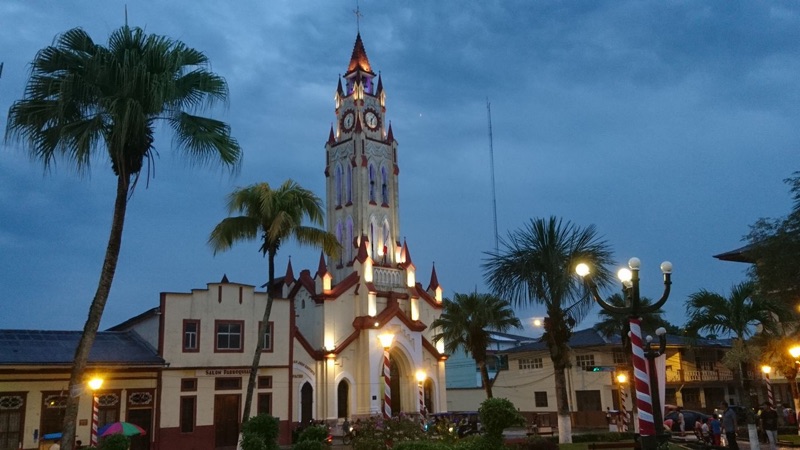
Iquitos
Sitting in the Amazon Rainforest of northern Peru, Iquitos is one of the main gateways to the Peruvian Amazon. However, most people are collected and returned to the airport in Iquitos before and after their Amazon tour.
If you have the time, we recommend a day or two to relax a little and learn about this fascinating rubber boom city. There are some interesting things to do in Iquitos, including visiting the butterfly farm, seeing a beautiful lake, enjoying different museums, and trying traditional jungle cuisine. To mention one of many unique points about the city, Iquitos is the largest city in the world unconnected to any other by road. This alone has left a unique feel to the city streets.
Iquitos grew from a Jesuit mission during the rubber boom of 1879 to 1912. This is when the rise of the bicycle and automobile caused a great demand for rubber, which was sourced from the rubber trees that grew in the Amazon Rainforest.
The rubber barons who owned the plantations built elaborate mansions, which have now been converted to restaurants, hotels, cafes and supermarkets. While walking the streets, you can identify these historically fascinating buildings by their elaborate tiling and windows.
A famous building in Iquitos is called the Iron House. Unbelievably, the Iron House was shipped all the way from Paris after a rubber baron saw it during an architectural exhibition. It now stands in Iquitos city opposite the Plaza de Armas.
Sipan
Another fascinating place you can visit in Peru, Sipan, is an archaeological site from the Moche Civilization and dates to between 50 – 700 AD. The site is where the Moche buried members of their royalty, and there are different elaborate tombs to find.
The most famous of the tombs is called the Lord of Sipán, and much of what we know of the Moche is from this one tomb. Researchers have found evidence of human sacrifice, and there are artifacts depicting ceremonial burials.
Drawings of items found within the tomb indicate sacrifice, bloodletting, and decapitation. In addition to the drawings, archaeologists also discovered other human remains in the tomb, along with some large knives.
You can visit the site from the city of Chiclayo. Although Sipan is the most well-known remnant of the Moche culture, there are many pyramids and other remains found in the nearby Moche Valley.
Arequipa
A uniquely attractive city in Peru, many of the historic buildings in Arequipa were crafted from locally available white volcanic rock. In addition to these buildings and Spanish colonial architecture, the city is backed by three volcanoes creating spectacular scenery.
Some of Peru’s favorite dishes originate in Arequipa, and you can enjoy some delicious restaurants. Enjoy walking the streets to marvel at beautiful buildings and visit interesting museums. Like Lima and Cusco, Arequipa’s Historic Center is also listed by UNESCO as a World Heritage Site.
Arequipa is a fantastic place to visit and is Peru’s second-largest city after Lima. This is also the gateway to other fantastic places in Peru, such as Colca Canyon mentioned further up.
The Paracas National Reserve
The Paracas National Reserve is one of the lesser visited attractions Peru has to offer. Covering over 500,000 acres of land and coastal waters, the reserve contains remains of the mysterious Paracas culture.
You can learn more about the Paracas culture in the small museum near the reserve entrance. The reserve is also the location where archaeologists discovered some of the oldest human remains in the Americas, which date to over 8,000 years ago.
The reserve is also a good area for bird watching, as 200 birds can be spotted in the region. The wildlife you can see includes the Chilean flamingos as well as sea lions. For some more wildlife, you can head to the Ballestas Islands.
The Ballestas Islands
Located a short boat ride off the coast of Peru, on the Ballestas Islands, you can find sea lions, pelicans, cormorants, and Peruvian booby birds. While enjoying the boat ride to visit the islands, you can look back to see the mysterious candelabra etched in the rock, which is just one of the region’s many prehistoric geoglyphs.
The Huacachina Sand Dunes
Huacachina is your oasis in the middle of the Peruvian desert. The oasis is fringed with palm trees and is surrounded by different restaurants, cafes, and hotels. This is a great place to relax after your adventures on the surrounding sand dunes.
Located about 5 km from Ica, this is also where many Ica residents relax on a weekend. However, it’s adventure-seeking tourists that make up a large portion of Huacachina visitors. The sand dunes are some of the largest in the world, which you can explore on sand buggies or by sandboarding for a fun adventure sport.
The feeling on the sand buggies is similar to being on a roller coaster, as the dunes can be 30 feet high in some places.
The Huascarán National Park
Home to hundreds of beautiful lagoons and glaciers, the Huascarán National Park is a favorite destination for people interested in mountain sports.
However, even if serious mountain climbing is of no interest, you can still visit several beautiful areas on half-day walks, such as beautiful glacial lagoons.
The park protects over 800,000 acres of the central Andean mountain range named the Cordillera Blanca. This includes Mount Huascaran, which is Peru’s largest mountain.
In addition to beautiful Andean scenery, you can enjoy spotting a number of fascinating animals and plants. See the famous Andean condors flying high above the reserve and even the vicuñas, which are one of Peru’s iconic camelids. Vicuña cloth was regarded so highly during the Inca Empire that it was reserved exclusively for Incan royalty.
To visit this beautiful place, you can base yourself in the city of Huaraz, which is a little north of Lima, Peru’s capital city.
Rainbow Mountain
One of the more recently popular attractions in Peru, Rainbow Mountain, as it is now known, is actually called Vinicunca. This is a fantastic multi-colored part of the Peruvian Andes, which you can visit on 1-day or 2-day tours from Cusco. If you enjoy adventure, you can also take the guided week-long Ausangate trek.
The colors come from the natural sandstone, which has striped the mountain with yellow, red, gold, and turquoise rock. Although only recently popularized as a tourist attraction, the unique, colorful beauty of the area makes Rainbow Mountain one of the most beautiful places in Peru’s Andes.
Lima
Lima is Peru’s capital city, and it is also home to some of Peru’s top attractions. The main draw for visitors is the UNESCO World Heritage-listed Historic Center. This is the oldest part of Lima, where you can enjoy a beautiful plaza surrounded by Spanish colonial buildings. There are some fascinating buildings in the area, such as the Monastery of San Francisco with its famous catacombs.
Another of Peru’s attractions is the food. Peruvian cuisine ranks among the world’s best, and Lima has many different top restaurants to enjoy. There are a diversity of uniquely Peruvian dishes with influences and fusions from Italian, Spanish, Arabic, and Asian cultures.
In addition to the more popular Cusco, Lima is also worth a visit for a day or two. Recommended areas to stay in are either Miraflores or the Barranco district. Miraflores is the main tourist hub in Lima and Barranco offers a more relaxed and artistic side to the city.
In addition to the Historic Center and restaurants, Lima is home to many other top things to do in Peru. You can enjoy fascinating museums and some great shopping for alpaca cloth and other items. For shopping, we recommend the Larcomar shopping center in Miraflores or Jockey Plaza in Surco. Some fascinating museums include the Museum of the Central Reserve Bank and the Larco Museum.
Sacsayhuaman
Another favorite sight in Cusco’s Sacred Valley, Sacsayhuaman, was a mystery to the Spanish. They didn’t think Andean cultures were capable of such impressive engineering feats.
This is one of the closest archaeological sites to Cusco, and although built by the pre-Incan Killke culture, this was later used as a citadel by the Inca Empire.
Built on a hill overlooking Cusco, Sacsayhuaman was the perfect position for a fortress to keep an eye on the Incan capital.
When you visit, you will see the incredible feats required in construction. It’s predicted that the entire area took 20,000 men to complete, as some of the giant stones lining the walls weigh 100 tons each.
You can also find 200 different archaeological structures dotted around the attraction.
If you’re lucky enough to visit Peru on the 24th of June, you can also witness the famous Inti Raymi celebrations that focus on Sacsayhuaman. This is a traditional Incan festival in honor of the sun god, the most important deity in Incan culture.
Trujillo
Trujillo is another city worth a visit. This is the gateway to the archaeological complex of Chan Chan mentioned above. However, Trujillo is also worth exploring due to its historic and compact city center.
Sitting in a green valley north of Peru’s capital, Trujillo offers beautiful architecture, ornate colonial churches, elaborate mansions, and different museums. The narrow cobblestone streets make it easy to imagine the time of the Spanish conquest. This was the main break area for sailors on the journey between Lima and Panama, with their ships filled with gold.
You can also explore the colonial houses for a glimpse into the city’s history.
The city is much smaller than Lima or Arequipa, and it can be explored after a couple of days. You can expect a warmer climate and clearer skies.
Mancora
If you’re after a beach location, the best suggestions are the beaches around Mancora. For a long time, Mancora was a secret of surfers. However, with its great seafood, comfortable resorts, sunshine, beautiful beaches and great nightlife, Mancora has become a general traveler destination.
With the warm water and calm waves in certain areas, this is a great place for surfing beginners. There are also more challenging swells for experienced surfers.
As this is a well-known spot in the surfing community, the area can be busy. If you would prefer a more relaxing beach setting, you can try Vichayito, which is just a little further south. It’s also close enough to still come back for the hotels, cafes, and restaurants offered in Mancora itself.
Lake Titicaca
Another of Peru’s well-known visitor sites, Lake Titicaca, is the world’s highest large lake. Accessed from the city of Puno in southern Peru, many local people in the region still wear traditional dress, making it an interesting cultural experience. The local women often wear petticoats and bowler hats, and their children dress in very colorful clothes. You can also visit the Uros community living on lake islands made entirely of reeds.
Around the lake, you can enjoy spotting a diversity of different animals. The wildlife you’re likely to see nearby includes many different birds and the vicuñas, which are the wild ancestors of the famous alpaca.
Lake Titicaca holds great significance for Andean communities as it did for the Inca themselves. Their belief is that Titicaca was the birthplace of the sun.
Ica
Ica has been inhabited by Andean communities for thousands of years. However, in 1563 with the defeat of the Inca, Ica became another Spanish-influenced city.
Ica is the base to experience the Paracas National Reserve and Huacachina sand dunes mentioned above.
Ica itself is also worth a visit in its own right. The region produces much of Peru’s wine and Pisco. There are many different wineries to visit, and you can also try Pisco, which is the main ingredient in the Pisco sour, Peru’s national drink.
You can enjoy different museums to learn about the region’s recent and ancient cultures, including the Paracas, Nasca, Ica, and the famous Inca
Leave a Reply
Tags: article, cusco, machu picchu, peru

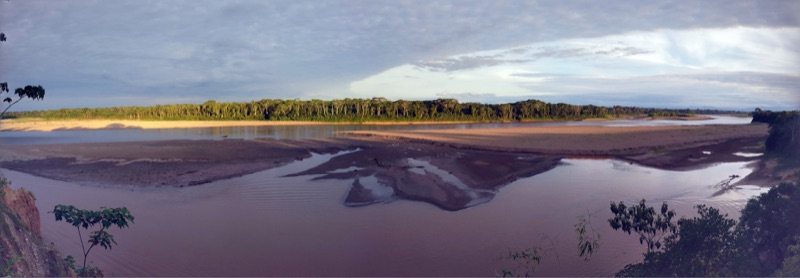
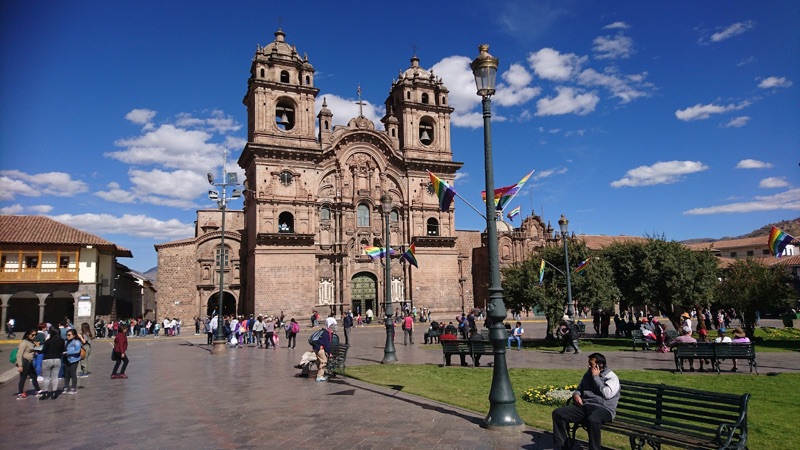
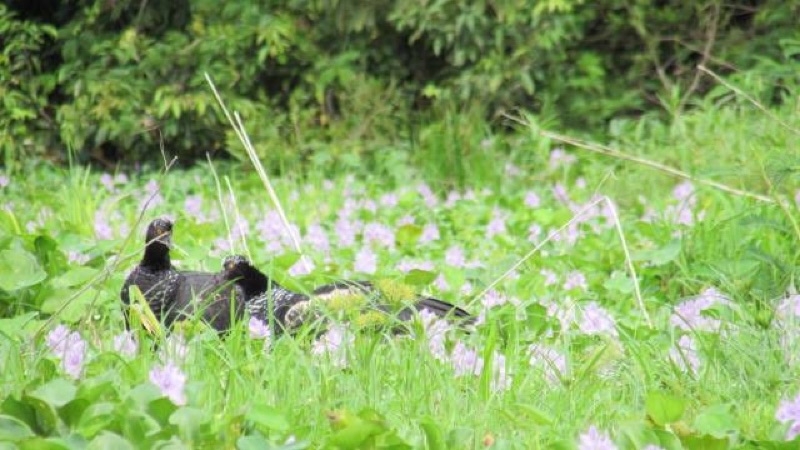
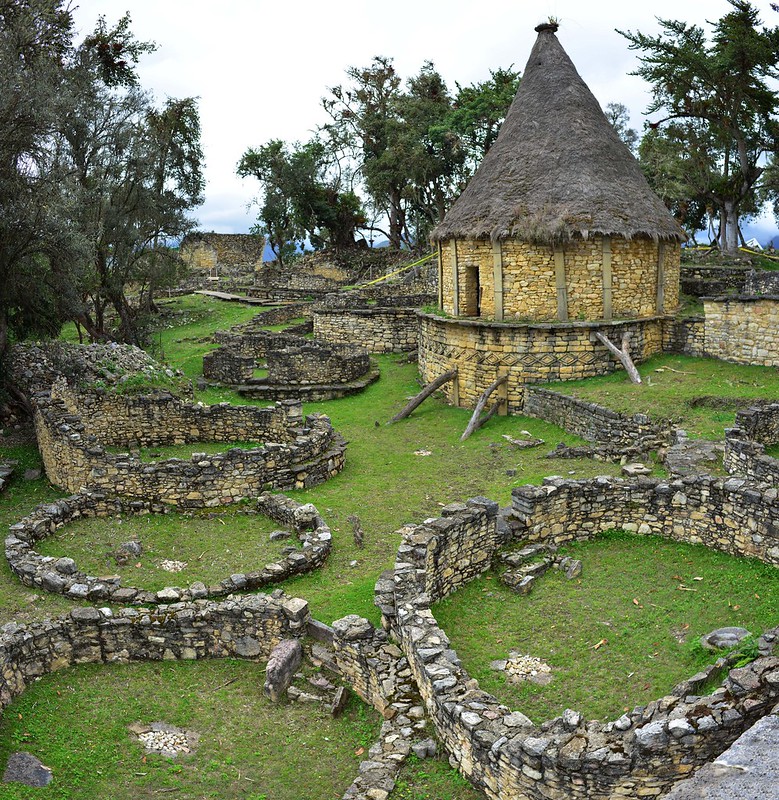
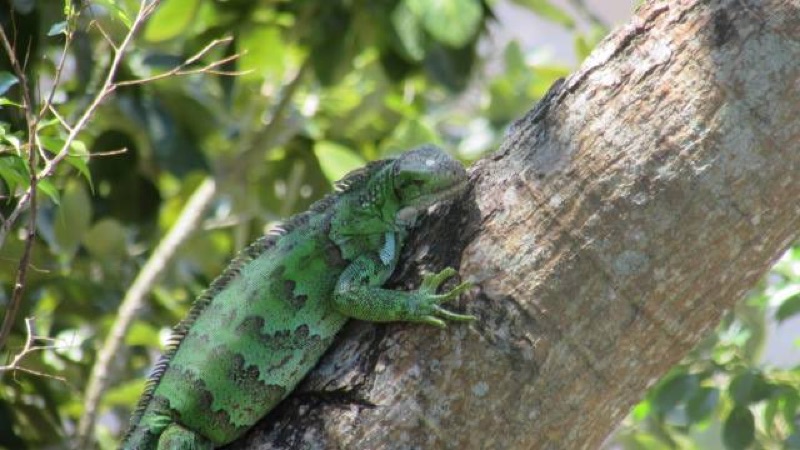
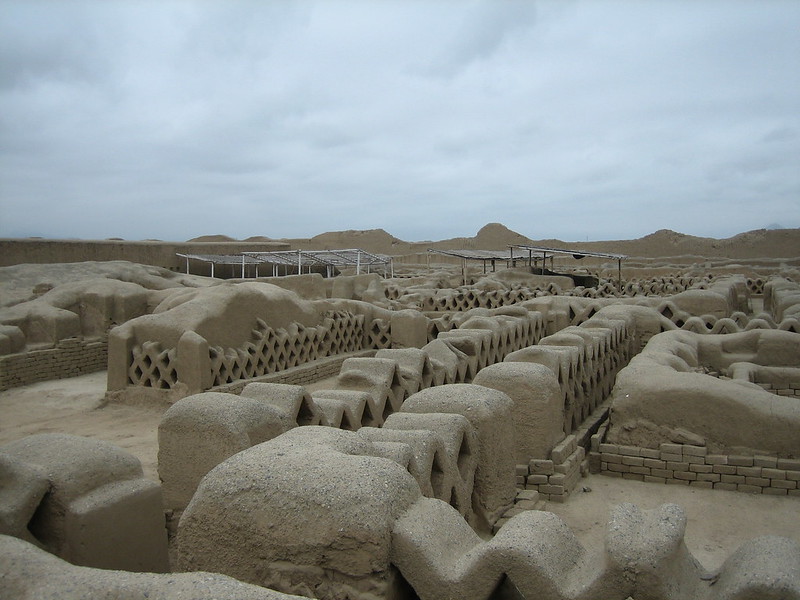

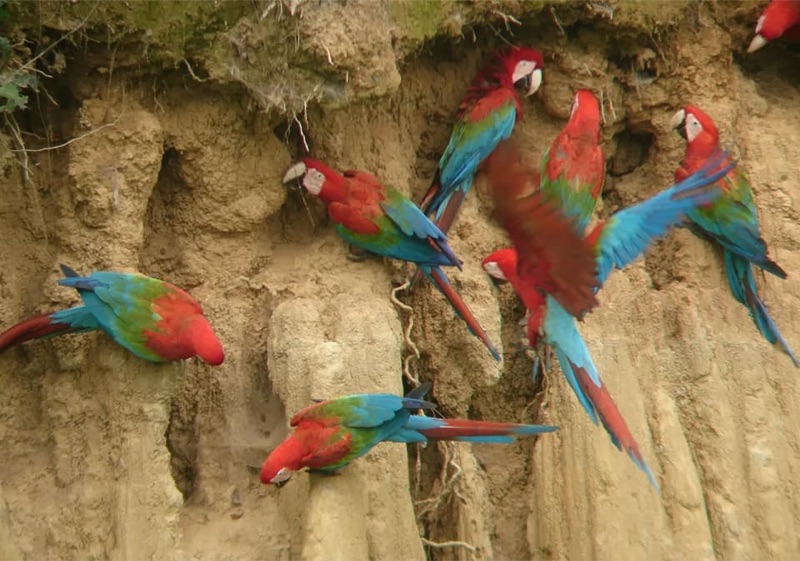

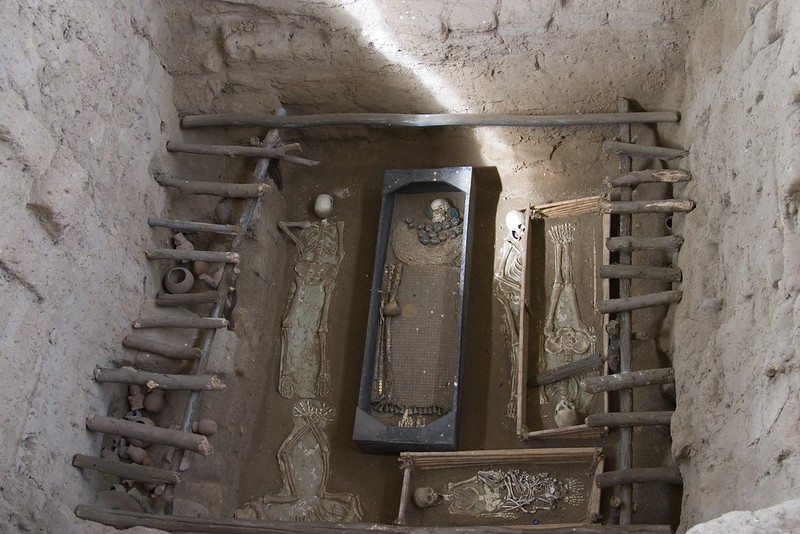







 Could Marcahuamachuco, Peru Really Rival Machu Picchu?
Could Marcahuamachuco, Peru Really Rival Machu Picchu?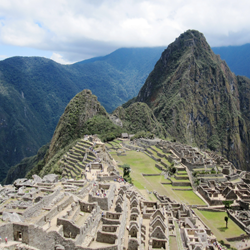 Travel to Peru – Episode 349
Travel to Peru – Episode 349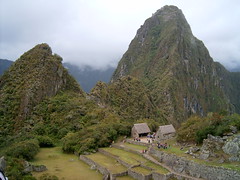 Heading to Machu Picchu? Why You Should Explore the Ruins Around Cusco First
Heading to Machu Picchu? Why You Should Explore the Ruins Around Cusco First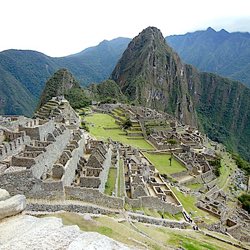 Planning a Trip to Machu Picchu, Peru For First Timers
Planning a Trip to Machu Picchu, Peru For First Timers
